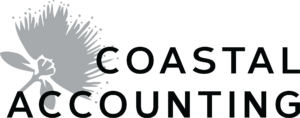How should I be pricing my product or service?
We’ve all heard the stories about the person that worked in the retail store, misheard an instruction from the owner about pricing a clearance product, mistakenly priced it double and sold them all in a day. Pricing touches everything from your business finances to your product’s positioning in the market, with considerations like whether it’s a timeless, bespoke, or a short-lived trending product. It’s a key strategic decision you need to make for your business, and it can be just as much an art as it is a science.
But it’s not a decision you only get to make once.
For example, if you’re trying to find the retail price of your product, there is a relatively quick and straightforward way to set a starting price.
To set your first price, add up all of the costs involved in bringing your product to market, set your profit margin on top of those expenses, and there you have it. This strategy is called cost-plus pricing, and it’s one of the simplest ways to price your product.
Another way is to use your existing customers to give you insight into whether or not you can raise your prices. Start by testing a higher price to a small segment of your existing customers and see how they react. But before you can worry about choosing your product’s sell price, there are a few other important things to consider. An effective pricing strategy comes down to understanding your costs. If you order products, you’ll have a straightforward answer as to how much each unit costs you, which is your cost of goods sold.
If you make your products, you’ll need to dig a bit deeper and look at a bundle of your raw materials, labour costs, and overhead costs. How much does that bundle cost, and how many products can you create from it? That will give you a rough estimate of your cost of goods sold per item.However, you shouldn’t forget the time you spend on your business is valuable, too.
To price your time, set an hourly rate you want to earn from your business, and then divide that by how many products you can make in that time. To set a sustainable price, make sure to incorporate the cost of your time as a variable product cost. At the end of the day, the price you choose should be what your target customers will pay on a consistent basis.
Here’s a “back of the envelope” calculation you can do to sense check where you are. Once you’re ready to calculate a price, take your total variable costs and divide them by 1 minus your desired profit margin expressed as a decimal. For a 20% profit margin, that’s 0.2, so you’d divide your variable costs by 0.8.
Variable costs aren’t your only costs.
Fixed costs are the expenses that you’d pay no matter what, and that stays the same whether you sell 10 products or 1,000 products. They’re an important part of running your business, and the goal is that they’re covered by your product sales as well.When you’re picking a per-unit price, it can be tricky to figure out how your fixed costs fit in, which is why testing different price points is key.
Of course there’s a lot more to it and the variable and nuances can be many and varied – but the point is to not be initially distracted by that and just set a pricing benchmark that will allow you a “compass bearing” on whether you are heading in the right direction or not. So, it goes to show that if you are struggling to answer the three questions or want to step back from the day to day for a minute to consider these questions – then it’s a good exercise.

